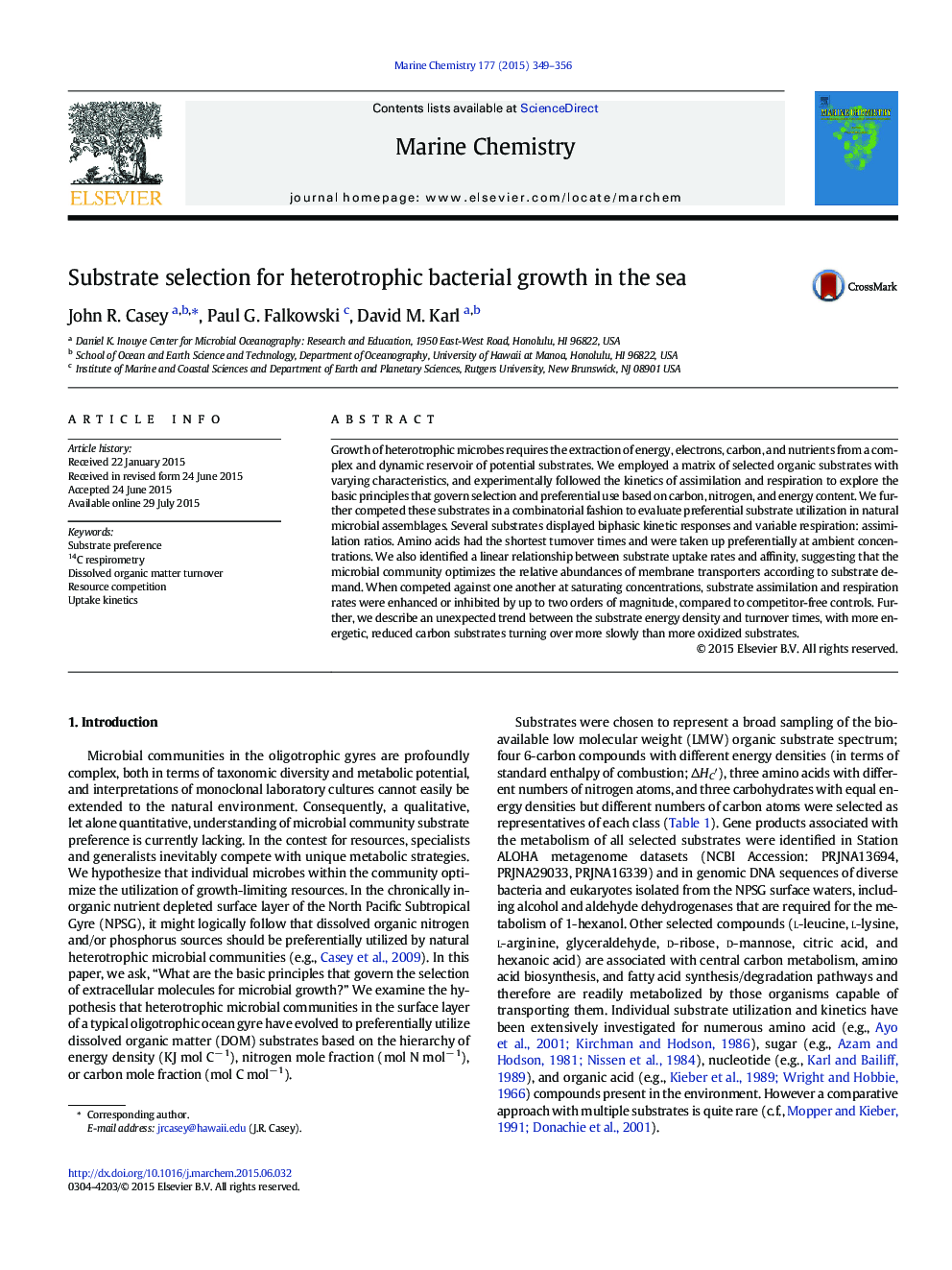| Article ID | Journal | Published Year | Pages | File Type |
|---|---|---|---|---|
| 10565653 | Marine Chemistry | 2015 | 8 Pages |
Abstract
Growth of heterotrophic microbes requires the extraction of energy, electrons, carbon, and nutrients from a complex and dynamic reservoir of potential substrates. We employed a matrix of selected organic substrates with varying characteristics, and experimentally followed the kinetics of assimilation and respiration to explore the basic principles that govern selection and preferential use based on carbon, nitrogen, and energy content. We further competed these substrates in a combinatorial fashion to evaluate preferential substrate utilization in natural microbial assemblages. Several substrates displayed biphasic kinetic responses and variable respiration: assimilation ratios. Amino acids had the shortest turnover times and were taken up preferentially at ambient concentrations. We also identified a linear relationship between substrate uptake rates and affinity, suggesting that the microbial community optimizes the relative abundances of membrane transporters according to substrate demand. When competed against one another at saturating concentrations, substrate assimilation and respiration rates were enhanced or inhibited by up to two orders of magnitude, compared to competitor-free controls. Further, we describe an unexpected trend between the substrate energy density and turnover times, with more energetic, reduced carbon substrates turning over more slowly than more oxidized substrates.
Related Topics
Physical Sciences and Engineering
Chemistry
Chemistry (General)
Authors
John R. Casey, Paul G. Falkowski, David M. Karl,
